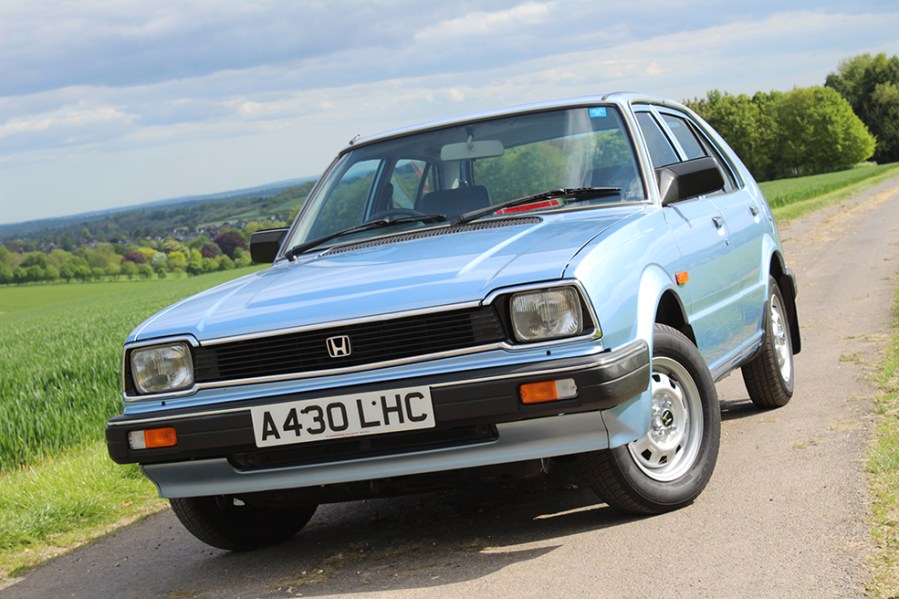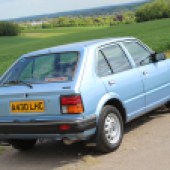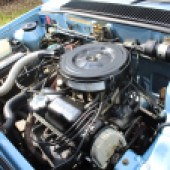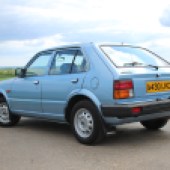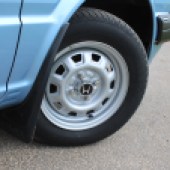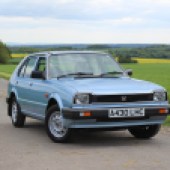We experience a rare surviving example of the Honda Civic Mk2 and come away suitably impressed by its qualities
Words and images: Jack Grover With thanks to: Watley Classics
During the 1960s Honda began to make its transition from the world’s largest maker of motorcycles to being a serious player in the car industry. After a false start with the technically brilliant but commercially unsuccessful 1300, Honda introduced the smaller, more conventional Civic which launched the company to international greatness as a car maker. Leading the charge for Honda cars in both North America and Europe, the Civic was a critical and commercial success due to its combination of economy, reliability, strong performance and fun-factor handling, which was unusual in small cars at the time – and all backed up by some brilliant marketing.
The second-generation Civic of 1979 looked remarkably similar to the original but was virtually an all-new product since it sat on the same platform as the Prelude coupe, which was a short-wheelbase variant of the Accord body. This meant that the new Civic was usefully wider, longer and more spacious. The drivetrain and running gear were mostly from the Prelude as well, although the Civic had its own new 1.3-litre version of the CVCC engine (slightly larger than the 1.3-litre engine offered in the old Civic). Rust had been the Achilles heel of the original Civic – it had become the first car to be recalled by the US Department of Transport for corrosion issues – so effort had been put into improving both the design of the body and the quality of the undercoat and paint. Despite causing less of a sensation than the original, the ‘Civic II’ (as it was branded in some markets) was deemed a useful improvement in most respects and continued to sell well, setting up Honda for serious growth in the 1980s.
When initial waves of Datsuns, Toyotas, Mazdas and Hondas came onto British roads they began oxidising almost instantly, and five- or even three-year old Japanese cars with frilly wheel arches and a tidemark of body sealant along the sills were common. But the other fine qualities of these cars could not be denied, and despite the rust, the awkward styling and the unusual names, Japanese cars enjoyed high satisfaction rates and earned regular repeat customers in the late 1970s and 1980s.

Nonetheless, any early-1980s Japanese car is a rarity. For it to be a Honda – the 16th bestselling car maker in the UK in 1980, well behind Datsun and Toyota, not to mention the likes of Talbot, Audi and Volvo – is even rarer. For it to be a Honda in virtually showroom condition with fewer than 50,000 miles on the clock is something of a unicorn.
But that’s what we have here. This 1983 Honda Civic was delivered to its sole previous owner in August of that year by the Honda dealer in Bexhill-on-Sea (yes, we’re ticking a lot of stereotypical ‘old and barely used Honda’ boxes). It was undersealed when new and still wears the Bygging International Rustproofing sticker to prove it. The windows also still bear the ‘OK’ inspection sticker and the one for the Bexhill Honda Car Centre, where this Civic was maintained for most of its life. When that dealer closed in 2016 it was looked after by one of the former employees, who took the opportunity to retire but kept up a relationship with both owner and car.
The result is an immaculate example of a Honda Civic – something that will thrill some and fail to raise any emotional response in many others. But if you appreciate cars as time capsules of their era then this Civic is worthy of a second look, because it really does look like it was picked up from the Bexhill-on-Sea Honda Car Centre, if not this morning, then certainly six months ago. I thought I’d managed to find some evidence of light surface rust coming out of the seams on the rear valance but it turned out to be rustproofing wax. So, we’re left with some surface rust on the fan shroud, some light road grime on the bulkhead in the engine bay and some peeling plastic on the stick-on labels for the lid of the coin compartment on the dashboard.
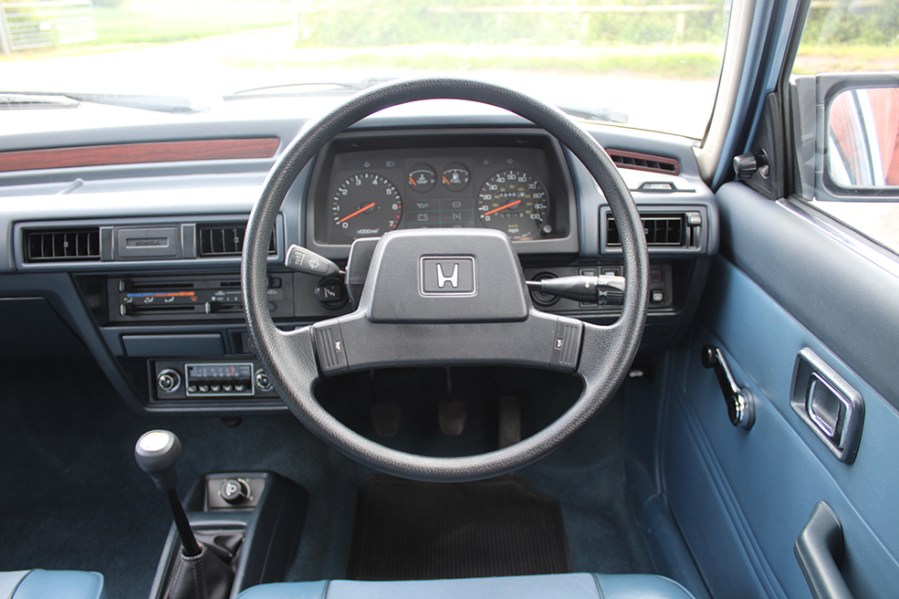
Speaking of which, if you’re familiar with the Triumph Acclaim then you’ll recognise a lot when you get inside this Civic. There are some subtle differences, but all the dials, switches and major trim elements are the same. Bearing in mind that the Civic was just an ordinary family hatchback, and not pitched or priced as a premium product, the level of fit and finish in the cabin is remarkable. It doesn’t thunk or thud with the heavyweight, obvious sort of quality of a Volvo or Audi of the same era, but everything moves with a lightweight, precision-made accuracy, be it the way the doors shut, the way the gear lever waggles in the neutral position or even the way the key goes into the ignition – no graunchy, give-it-a-wiggle forcing of an ignition barrel made on old tooling in the West Midlands here.
The engine in this Civic would also be familiar to Acclaim owners, being the same 1.3-litre OHC motor with Honda’s Compound Vortex Controlled Combustion – a term that actually doesn’t do a great job of describing how its revolutionary stratified charge fuel system works. Intended primarily to meet American energy regulations without the need for a catalytic converter, fuel injection or power-sapping ‘smog pumps’ (and, rather less ‘green’ in retrospect, still being able to run on cheaper leaded petrol…) the CVCC system was less relevant in the UK market but still made for an impressively economical engine that, crucially, operated and drove like any other motor.
The mechanical smoothness and precision feel continues with the lightweight, beautifully progressive clutch pedal and the way the gear lever snicks into first with just the right level of feel – not enough to be obstructive, but enough to positively engage. Despite juggling with the choke, the engine stumbled quite a bit as it warmed up. This was in all likelihood either down to slightly stale fuel or some mild plug fouling since the Civic had been started, moved around the showroom and then stopped a fair bit in the previous weeks without getting a good run.
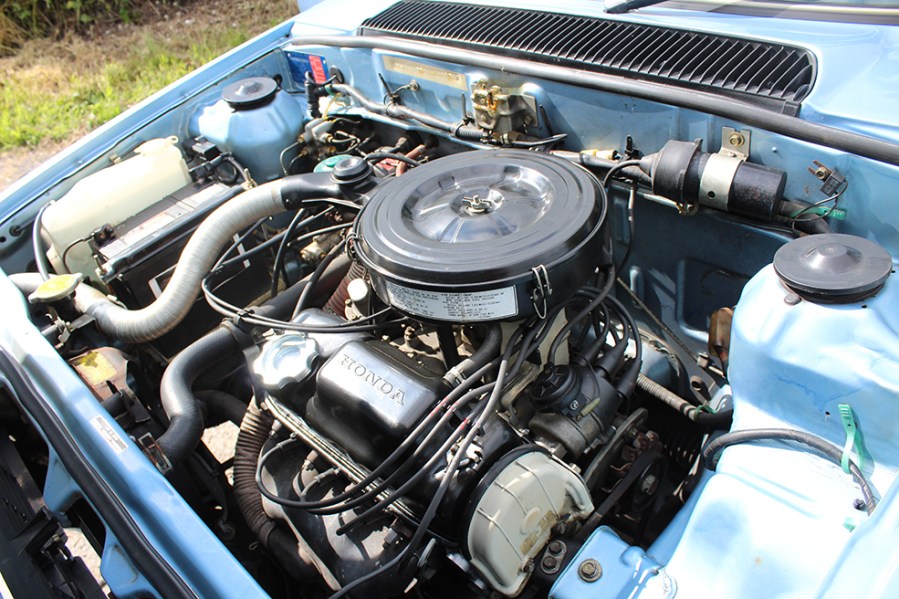
It takes quite a long time for the tiny temperature gauge needle to get into its normal position, and then the engine smooths out. Again, it’s classic Honda that there isn’t much low-down torque and the engine pulls better the higher up the rev counter you go. And it’s equally typical that the engine remains beautifully smooth all the way though. Once up to temperature, there was no flat spots, missing or hesitancy which can affect old CVCC engines. For just cruising or pottering around the engine will pull cleanly from only 1800rpm or so, helped by the fact that it only weighs about 800kg.
But to get the best performance, and the most ‘Honda-ness’ from it, you really need to be doing at least 3000rpm. This is no bad thing, since you get to use the lovely gearchange which, if it had a stubbier lever to shorten the fore/aft throw, is worthy of a sports car. The 1980s was a time when ordinary cars still had 13-inch wheels with tyres only 4.5 inches across, so the unassisted steering is light and has enough feel and feedback to let you instinctively pilot the Civic without going overboard. The Civic’s controls all work with the same lightness of touch and progression of action, and there’s no one aspect that spoils the character. The closest is the brakes, which are servo assisted and so are a bit wooden, but they still operate very well.
As a hatchback, the Civic feels spacious and light thanks to its low-cut dashboard, slim doors and thin pillars. Hondas traditionally have quite short-travel springing and there was one patch of frost- or flood-damaged tarmac which the suspension really didn’t like, becoming very harsh. But firm damping that doesn’t take high-frequency low-amplitude bumps is a Honda hallmark, and on the flip side the Civic feels remarkably composed on better roads and higher speeds where a lightweight small hatch might be expected to feel rather out of its depth. This is certainly helped by the overall drivetrain smoothness – I couldn’t keep mentally comparing the mechanical calm of the Civic to the thrashy, whiny, shunty ways of a Metro or something similar from the same year.
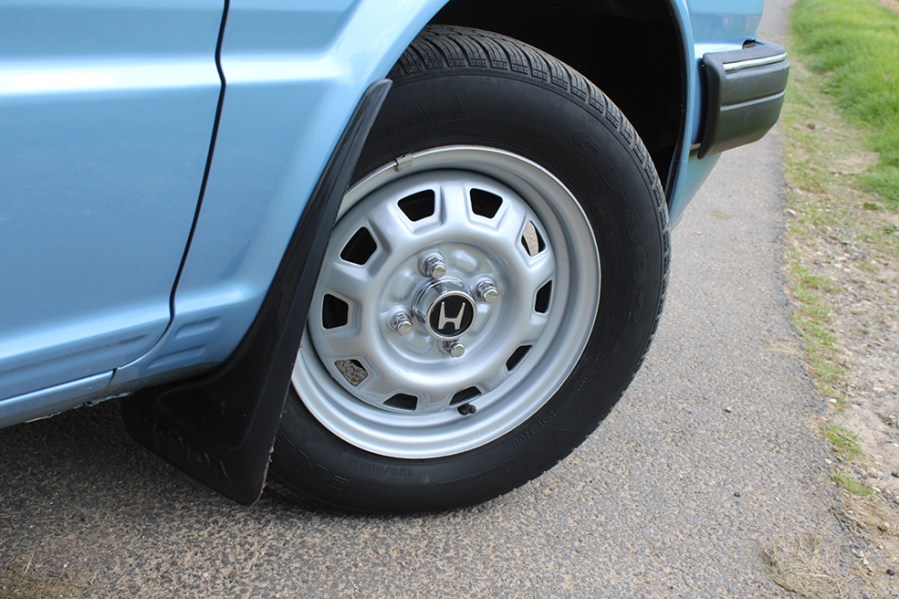
Honda Civic Mk2: our verdict
If you’re into old Hondas or classic Japanese cars then the very existence of this Civic, let alone its condition, has probably sold you on the idea. But if you needed more convincing, I hope that you’ve at least been intrigued by the fact that this car has more to offer than mere efficient transport.
Hondas were designed and engineered with particular principles and values in mind, and that applies as much to a humble mid-range Civic as to a CB750 or an NSX. That makes them worthy of classic status, and all the more so when in such amazingly well-preserved condition.

